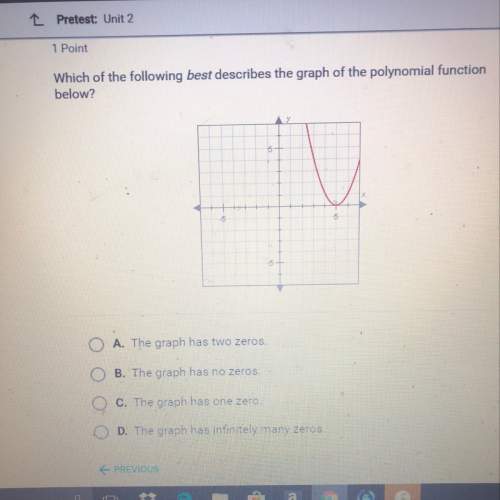2. Which sequence of transformations takes the graph of y = k(x) to the graph of
y=-k(x + 1)?
...

Mathematics, 21.05.2021 19:40, shifaxoxoxo
2. Which sequence of transformations takes the graph of y = k(x) to the graph of
y=-k(x + 1)?
A. Translate 1 to the right, reflect over the x-axis, then scale vertically by a factor of
B. Translate 1 to the left, scale vertically by , then reflect over the x-axis.
C. Translate left by , then translate up 1.
D. Scale vertically by z, reflect over the y-axis, then translate up 1.

Answers: 3
Other questions on the subject: Mathematics

Mathematics, 21.06.2019 19:00, notsosmart249
The focus of parabola is (-4, -5), and its directrix is y= -1. fill in the missing terms and signs in parabolas equation in standard form
Answers: 1


Mathematics, 22.06.2019 00:00, tuetheturtle
The letters g e o r g i a are placed in a bag . if you picked a card and knew it was a vowel , what is the probability that it is an a ?
Answers: 1

Mathematics, 22.06.2019 00:00, genyjoannerubiera
Iwill arward ! , i if bt ≅ eu , bu ≅ et , prove: ∠b ≅ ∠e. fill in the blanks: draw segment ut ≅ bt≅ bu ≅ △ubt ≅ △
Answers: 1
Do you know the correct answer?
Questions in other subjects:

Mathematics, 21.05.2020 06:58


Social Studies, 21.05.2020 06:58

English, 21.05.2020 06:58














